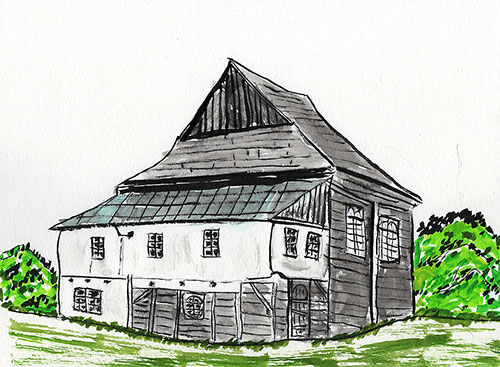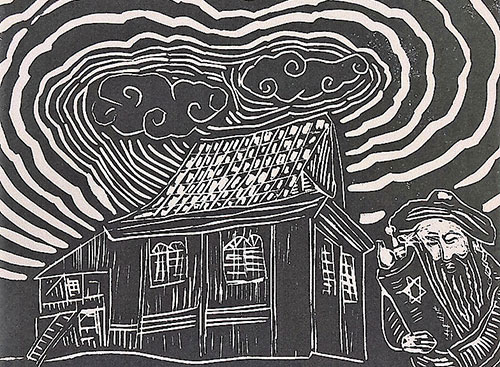Lost Treasures: The Wooden Synagogues of Eastern Europe The Artwork of Bill Farran
Kitajgorod, Ukraine - Sumi-e Style Brush Painting
Kitajgorod, Ukraine - Sumi-e Style Brush Painting
Yiddish: Kitaigorod
Kitajgorod was founded in 1607 as a fortified town by Andrzej Potocki. His son, Stanisław Potocki, completed the construction of the Kitajgorod Castle in 1638.
During a violent pogrom in Kitajgorod on June 16, 1919, about 80 Jews perished. During the night, a medical team was dispatched to Kitajgorod who set up a makeshift infirmary to provide relief and medical treatment for victims. It also collected information about the events preceding and during the pogrom and recorded the numbers of casualties.
The team inspected the homes in the shtetl to assess the extent of damage, injuries, and loss of life. They noted the shattered glass in the windows and the broken doors of the buildings, which had been emptied of everything including samovars (urns with a spigot at the base used to boil water for tea) making it impossible to boil water to tend to the wounded. “Traces of bullets are seen on the walls and ceilings of many homes. But most importantly,” wrote one of the medical team’s members, “there is blood everywhere… Kitaihorod is covered in blood.”
The Germans occupied the town in 1941, sending Jews to a labor camp in Kamenets-Podolski. In January 1942 they were murdered along with other Jews from the area.
Purchase a print
Sumi-e Style Brush Prints are 8x10 inches, in an 11x14 matte
Original linocut prints are 8x10 inches, and are available either unmatted or in an 11x14 matte.



